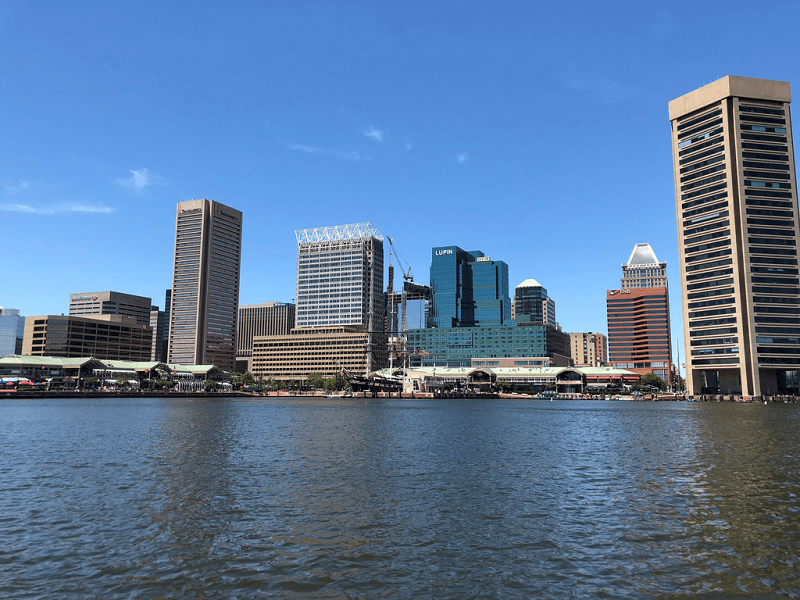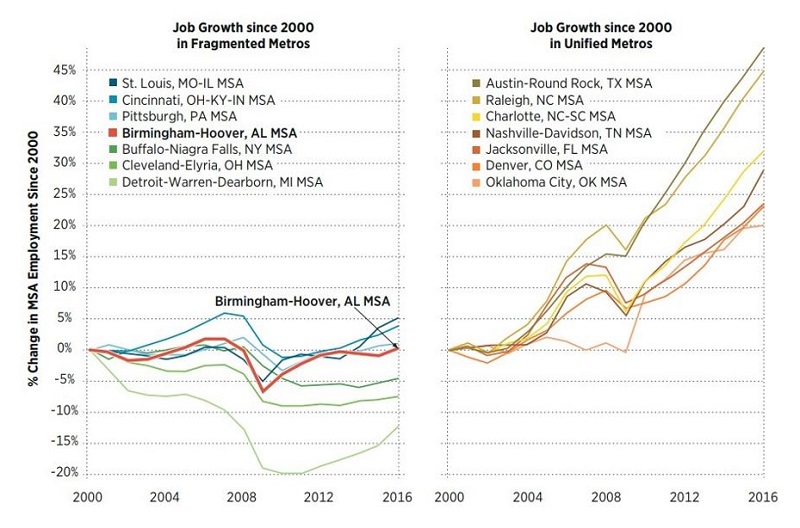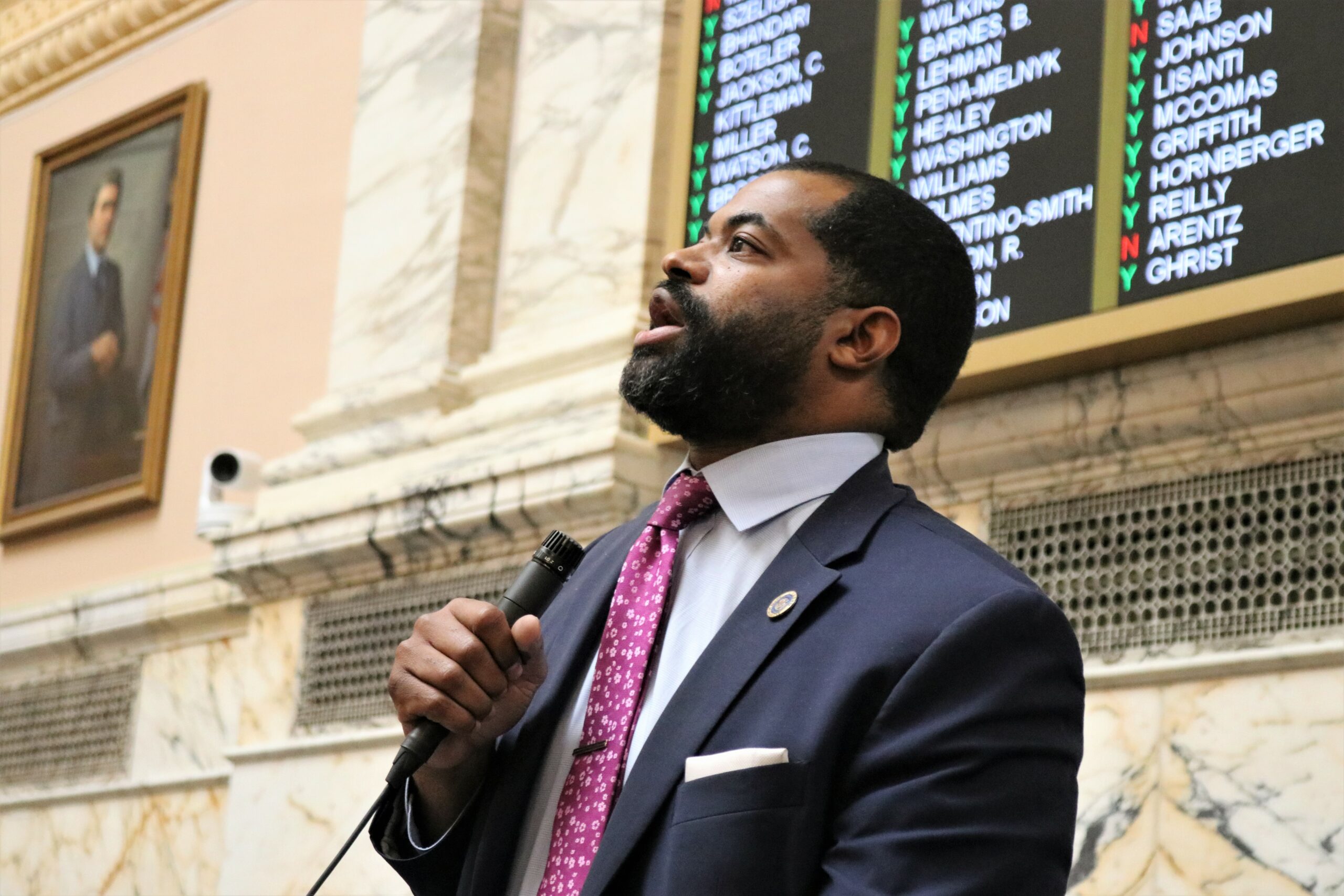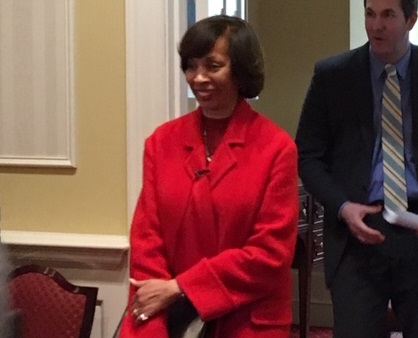Opinion: Baltimore City-County Merger Idea Offers False Hope

The Baltimore Sun had an op-ed last week saying the Baltimore region needs “a massive reset and a merger of its city and county governments to create the structural foundation for long-term revival.”
Perhaps the ideas of Baltimore Now are getting traction. We said “reset” first, and it’s exactly what we’re calling for.
But the rationale for a Baltimore City and Baltimore County merger brings up a chicken-or-egg problem.
It might be that regional consolidation leads to job growth and “long-term revival.”
But I think this reverses cause and effect. Regional consolidation and economic growth are the result of an already unified region where key interests have consolidated around a shared destiny.
The problem for the Baltimore region is the absence of a shared destiny. Shared governance wouldn’t fix this problem. In fact, the problem itself makes shared governance impossible.
Segregation=Stagnation
The author of The Sun op-ed was on talk radio June 6 discussing the difference between Nashville, Tenn., and Birmingham, Ala. One consolidated decades ago, and one didn’t, which he says explains why Nashville grew and Birmingham didn’t.
I looked into this and found a recent report called “Together We Can,” drafted by people in Birmingham who seem to agree with the op-ed. The title of their report echoes a similar one drafted by folks in St. Louis with the same idea – “Better Together.” It’s a sign of how things are going in Baltimore that the best we can produce is the occasional op-ed on the topic when the template for “Baltimore Together” has been drafted multiple times.
Here’s the Birmingham argument for regional consolidation in one chart:

According to this, metro areas with unified governments saw job growth. (Right chart: Austin, Raleigh, Charlotte, Nashville, Jacksonville, Denver and Oklahoma City.)
Fragmented metro areas did not. (Left chart: St. Louis, Cincinnati, Pittsburgh, Birmingham, Buffalo, Cleveland and Detroit.)
But there’s something else about the “fragmented” regions on the left chart: they are the most racially segregated places in the country.
A study of persistent segregation using 2010 census data puts all the left-chart regions on the list of worst segregated places in the country.
None of the right-chart regions are on that list.
The Baltimore region is on the list of worst-segregated places as well.
The difference between the left chart and the right chart isn’t smart regional governance, naturally leading to job growth.
The difference is regional segregation, and whether its existence has destroyed the preconditions that would make regional cooperation possible.
Regional segregation correlates not just with fragmented regional governance but economic stagnation, and the reason is that segregation is designed to constrict and defeat economic activity and mobility.
Black economic activity and mobility
The targets of segregation are the very structures that hold a region together and fuel its economy. Schools. Transit systems. Housing. Major industries – the ones that used to anchor entire regions and that were usually based in the cities many regions left for dead.
Consider Baltimore’s transit system. At the same time the D.C. Metro plan was unveiled, there was an almost identical plan for Baltimore. But then came the ’68 riots. D.C. built theirs. We never really built ours – meaning, we did not build the best solution to the racial and economic isolation that led to ’68. Which is why we had 2015.
A Baltimore with its own version of the D.C. Metro is a fundamentally different place than it is today. The reason Baltimore doesn’t is not because of the absence of shared governance – like a regional transit authority. We don’t have a regional transit authority because of the fear, decades ago and today, of what it would lead to – black mobility.
We’re not Nashville
Once we define the real obstacle to regional success, it’s much harder to find a regional governance “success story.”
Nashville’s city-county merger happened in the Jim Crow south, 1961 – around the time a few black kids jumped into a whites-only pool, leading the city to close every pool in town for the next three years.
Indianapolis, meanwhile, merged in 1970 – two years after parents from its small black population filed suit to get access to regional, white schools. Some didn’t desegregate until the 1980s, and Indianapolis still makes the list of most segregated regions in the country – actually scoring one notch worse than Baltimore.
Racial segregation wasn’t solved in these places. It wasn’t even on the table, because there weren’t enough black residents with enough political power to put it there.For a proper comparison, Baltimore has to look to other border state cities like itself – St. Louis and Louisville.
(The Sun op-ed suggests we can look to one more border state city, but it had the wrong Kansas City in mind. The resurgent one – with a new light rail and a population similar to Baltimore’s – is in Missouri, and it’s as “fragmented” as ever, across four different counties and served by 16 different school districts. The Kansas City that merged with a county is in Kansas. It has only 150,000 people, and no new light rail.)
The city of St. Louis shows a failed merger attempt, and what happens when a legacy of distrust, born from a history of segregation, is not dealt with. In other words, St. Louis shows what happens when a shared destiny isn’t constructed before a shared governance is proposed.
Their effort to unite the city with St. Louis County just stalled, in no small part because of “near-unanimous opposition from state and municipal-based African-American officials,” who were concerned about the political fate of black people in a new “majority white voting jurisdiction.”
That region’s history is littered with reasons for their suspicion.
Louisville’s 2003 merger, on the other hand, is a story of partial success – but the real victory happened decades earlier when the courts imposed regional school desegregation in 1975.
Long before Louisville decided on regional governance, it was a place that decided to desegregate it’s schools – or at least, it was a place that eventually decided to accept, and then embrace, a court’s decision to force all of its children to attend one school system encompassing both city and county. This created the political circumstances in which regional consolidation became imaginable, and, created some degree of shared destiny.
In fact, as an achievement, the consolidation of a metro government – which is quite complicated and still fragmented – pales in comparison to that region’s success in school desegregation. At least it does to me, after reading the sad comparison between Louisville’s regionally integrated schools and Detroit’s regionally isolated schools.
Schools, transit, history
Separate schools usually mean separate destinies, and separate destinies is exactly what the Baltimore region and many others have chosen.
That’s why the St. Louis merger plan didn’t even touch the 24 different districts in that region. That’s why Indianapolis, to this day, is served by 11 districts. That’s why Kansas City is served by 16 of them, with “Kansas City School District” serving the disproportionate number of black and low-income children.
And that’s why, around the same time the never-built regional transit plan was proposed, regional school desegregation plans were proposed for Baltimore, and vociferously rejected by white parents, one after the other.
Fifty years later, a unified Baltimore City-County school system remains unimaginable, and it’s a fool’s errand to consider regional consolidation without facing why.
Yet the Sun op-ed doesn’t even mention schools.
Or transit.

Dan Sparaco
These are the real issues, not the promised synergies and efficiencies of a bureaucratic merger.
Of course, the real issues are the hardest issues, which is why this currently hopeless idea gets traction. People are looking for a way to shock the patient, for a jolt of real change for Baltimore City, in place of stagnation.
But this idea is a false hope for an end-run around the consequences of the racial segregation that, more than anything else, defines and undermines the Baltimore region’s economy and its people.
There is no end-run, as St. Louis shows us. History, both there and here, provides black voters a long list of reasons to hold onto a status quo in which they have a voice, particularly when the promised benefits of change are an abstraction. Good luck trying to avoid schools, transit and history, then pointing to cities that have never had a black mayor – like Nashville and Indianapolis – to argue in favor of a combined Baltimore City-County that will be only 43 percent black.
I keep looking to the way St. Louis responded to its Freddie Gray moment, not just as a lost opportunity for Baltimore. Without question, had we sought, four years ago, a comprehensive analysis of the events of April 2015, it might have put us on a path toward the shared understanding necessary to make regional solutions possible. Instead, while St. Louis has the work and analysis of the Ferguson Commission, and we have Baltimore Twitter.
But the opportunity is still there. Those genuinely interested in regional governance for Baltimore should study all the work done by the Ferguson Commission, as well as the work done by public health experts at St. Louis’ Washington University, then figure out how it can be copied in Baltimore.
Baltimore can’t try to copy regional solutions found in places with none of its history or its challenges. It needs to look in the mirror.
— DAN SPARACO
The writer is an attorney and former assistant deputy mayor in Baltimore City. He started the Baltimore Now political action committee, which seeks political change in the city.
Did someone forward this to you?
Get your own daily morning news roundup in your inbox. Free. Sign up here.



 Creative Commons Attribution
Creative Commons Attribution